#Azure IoT Services
Text
Demystifying Microsoft Azure Cloud Hosting and PaaS Services: A Comprehensive Guide
In the rapidly evolving landscape of cloud computing, Microsoft Azure has emerged as a powerful player, offering a wide range of services to help businesses build, deploy, and manage applications and infrastructure. One of the standout features of Azure is its Cloud Hosting and Platform-as-a-Service (PaaS) offerings, which enable organizations to harness the benefits of the cloud while minimizing the complexities of infrastructure management. In this comprehensive guide, we'll dive deep into Microsoft Azure Cloud Hosting and PaaS Services, demystifying their features, benefits, and use cases.
Understanding Microsoft Azure Cloud Hosting
Cloud hosting, as the name suggests, involves hosting applications and services on virtual servers that are accessed over the internet. Microsoft Azure provides a robust cloud hosting environment, allowing businesses to scale up or down as needed, pay for only the resources they consume, and reduce the burden of maintaining physical hardware. Here are some key components of Azure Cloud Hosting:
Virtual Machines (VMs): Azure offers a variety of pre-configured virtual machine sizes that cater to different workloads. These VMs can run Windows or Linux operating systems and can be easily scaled to meet changing demands.
Azure App Service: This PaaS offering allows developers to build, deploy, and manage web applications without dealing with the underlying infrastructure. It supports various programming languages and frameworks, making it suitable for a wide range of applications.
Azure Kubernetes Service (AKS): For containerized applications, AKS provides a managed Kubernetes service. Kubernetes simplifies the deployment and management of containerized applications, and AKS further streamlines this process.

Exploring Azure Platform-as-a-Service (PaaS) Services
Platform-as-a-Service (PaaS) takes cloud hosting a step further by abstracting away even more of the infrastructure management, allowing developers to focus primarily on building and deploying applications. Azure offers an array of PaaS services that cater to different needs:
Azure SQL Database: This fully managed relational database service eliminates the need for database administration tasks such as patching and backups. It offers high availability, security, and scalability for your data.
Azure Cosmos DB: For globally distributed, highly responsive applications, Azure Cosmos DB is a NoSQL database service that guarantees low-latency access and automatic scaling.
Azure Functions: A serverless compute service, Azure Functions allows you to run code in response to events without provisioning or managing servers. It's ideal for event-driven architectures.
Azure Logic Apps: This service enables you to automate workflows and integrate various applications and services without writing extensive code. It's great for orchestrating complex business processes.
Benefits of Azure Cloud Hosting and PaaS Services
Scalability: Azure's elasticity allows you to scale resources up or down based on demand. This ensures optimal performance and cost efficiency.
Cost Management: With pay-as-you-go pricing, you only pay for the resources you use. Azure also provides cost management tools to monitor and optimize spending.
High Availability: Azure's data centers are distributed globally, providing redundancy and ensuring high availability for your applications.
Security and Compliance: Azure offers robust security features and compliance certifications, helping you meet industry standards and regulations.
Developer Productivity: PaaS services like Azure App Service and Azure Functions streamline development by handling infrastructure tasks, allowing developers to focus on writing code.
Use Cases for Azure Cloud Hosting and PaaS
Web Applications: Azure App Service is ideal for hosting web applications, enabling easy deployment and scaling without managing the underlying servers.
Microservices: Azure Kubernetes Service supports the deployment and orchestration of microservices, making it suitable for complex applications with multiple components.
Data-Driven Applications: Azure's PaaS offerings like Azure SQL Database and Azure Cosmos DB are well-suited for applications that rely heavily on data storage and processing.
Serverless Architecture: Azure Functions and Logic Apps are perfect for building serverless applications that respond to events in real-time.
In conclusion, Microsoft Azure's Cloud Hosting and PaaS Services provide businesses with the tools they need to harness the power of the cloud while minimizing the complexities of infrastructure management. With scalability, cost-efficiency, and a wide array of services, Azure empowers developers and organizations to innovate and deliver impactful applications. Whether you're hosting a web application, managing data, or adopting a serverless approach, Azure has the tools to support your journey into the cloud.
#Microsoft Azure#Internet of Things#Azure AI#Azure Analytics#Azure IoT Services#Azure Applications#Microsoft Azure PaaS
2 notes
·
View notes
Text
Azure IoT Services: Revolutionizing the World of Internet of Things
The Internet of Things (IoT) has revolutionized the way we interact with the physical world, creating vast opportunities for businesses across various industries. As IoT devices continue to proliferate, the need for robust connectivity, efficient data man

View On WordPress
#Azure IoT Services#Internetofthings#Azure#azure ai demo#azure ai tutorial#Azure Service#microsoft azure
1 note
·
View note
Text
My Journey with Azure IoT Hub: Connecting and Managing IoT Devices at Scale
The Internet of Things (IoT), which enables seamless connectivity and automation across numerous industries, has completely changed the way we engage with technology. I was curious to learn more about the Internet of Things and its possible uses as an aspiring IoT enthusiast. My experience using Azure IoT Hub, Microsoft’s cloud-based IoT platform, and how it assisted me in connecting and managing IoT devices at scale are both discussed in this blog.
Getting Started with Azure IoT Hub

To embark on my IoT journey, I began by understanding the fundamentals of Azure IoT Hub. Azure IoT Hub is a fully managed service that acts as a central hub for bi-directional communication between IoT devices and the cloud. It provides secure, reliable, and scalable connectivity for IoT solutions. Setting up an Azure IoT Hub was my first step. While the process was relatively straightforward, I encountered a few challenges along the way.
Connecting IoT Devices
Once Azure IoT Hub was set up, I delved into the world of IoT devices. I worked with various types of IoT devices, ranging from simple sensors to complex industrial machines. Connecting these devices to Azure IoT Hub required the implementation of device-specific protocols such as MQTT or HTTP. Additionally, I focused on securing device connections and data transmission by utilizing security features provided by Azure IoT Hub.
Real-world examples of IoT devices connected to Azure IoT Hub are aplenty. For instance, in the healthcare industry, wearable devices can transmit patient vitals to Azure IoT Hub, allowing healthcare providers to monitor and respond to critical situations promptly. In smart homes, IoT devices such as thermostats and security cameras can be connected to Azure IoT Hub, enabling remote control and monitoring capabilities.
Managing IoT Devices at Scale
As my IoT project grew, I encountered the need to scale up the number of connected devices. Azure IoT Hub offered robust device management features that simplified the process of managing a large fleet of devices. I could remotely monitor the health, status, and firmware version of each device, enabling efficient troubleshooting and maintenance. Implementing best practices for device management, such as grouping devices based on location or functionality, enhanced the overall operational efficiency of my IoT solution.
Data Ingestion and Processing
Data collected from IoT devices is a valuable asset that can drive actionable insights and informed decision-making. Azure IoT Hub facilitated the ingestion and routing of data to Azure services for further processing and analysis. I had the opportunity to work with Azure Stream Analytics and Azure Functions, which enabled real-time data processing, transformation, and visualization. Leveraging these services allowed me to unlock the true potential of IoT data and derive meaningful insights.

Security and Compliance
Any IoT solution must prioritize security. Azure IoT Hub provided robust security features that ensured end-to-end protection of IoT deployments. These features included device authentication, message encryption, and integration with Azure Active Directory for access control. Additionally, Azure IoT Hub helped me meet compliance and regulatory requirements by providing built-in support for industry standards such as ISO 27001, HIPAA, and GDPR. Throughout my journey, I learned valuable lessons and implemented best practices for securing IoT solutions.
Scalability and Performance
Scaling an IoT solution to handle thousands or millions of devices is a complex task. Azure IoT Hub offered scalability features that allowed me to effortlessly handle large-scale IoT deployments. With Azure IoT Hub’s device-to-cloud messaging capabilities, I could reliably transmit messages to and from a massive number of devices. Moreover, I gained insights into optimizing IoT solutions for performance by considering factors such as message size, frequency, and device capabilities.
Real-World Use Cases
To understand the versatility of Azure IoT Hub, it is crucial to explore real-world use cases. In the manufacturing industry, Azure IoT Hub can be leveraged to connect and monitor machines on the factory floor, ensuring optimal performance and predictive maintenance. In the agriculture sector, IoT devices connected to Azure IoT Hub can collect data on soil moisture levels, temperature, and humidity, enabling farmers to make data-driven decisions for irrigation and crop management. These use cases highlight the valuable role that Azure IoT Hub plays in various domains and industries.
Future of IoT and Azure IoT Hub
The future of IoT is promising, with emerging trends shaping the landscape. As IoT continues to evolve, Azure IoT Hub will play a crucial role in enabling seamless connectivity, advanced analytics, and artificial intelligence capabilities. Integration with other Azure services and continuous updates from Microsoft ensure that Azure IoT Hub remains at the forefront of IoT innovation. The possibilities for IoT applications are limitless, and Azure IoT Hub will continue to empower developers and organizations to build robust and scalable IoT solutions.
Throughout my journey with Azure IoT Hub, I gained valuable insights and experiences. Azure IoT Hub simplified the process of connecting and managing IoT devices, providing a reliable and scalable platform. The seamless integration with other Azure services allowed me to unlock the full potential of IoT data. Moreover, the security and compliance features provided peace of mind, ensuring that my IoT solution was protected from threats. Overall, Azure IoT Hub has been instrumental in my IoT journey, contributing to enhanced efficiency and productivity.
Recommendations and Tips
For those interested in starting their own IoT journey with Azure IoT Hub, I offer the following recommendations and tips:
Begin with a clear understanding of your IoT use case and requirements.
Familiarize yourself with the documentation and resources provided by Microsoft to gain a solid foundation.
Start small and gradually scale your IoT solution as needed.
Take advantage of the device management and security features offered by Azure IoT Hub.
Leverage other Azure services such as Azure Stream Analytics and Azure Functions to derive meaningful insights from IoT data.
Stay updated on emerging trends and best practices in the IoT space.
To deepen your knowledge of IoT and Azure IoT Hub, I recommend exploring Microsoft’s official documentation, participating in the ACTE Technologies Microsoft Azure training, and attending IoT-focused conferences and events.

Azure IoT Hub has proven to be a powerful and comprehensive platform for connecting and managing IoT devices at scale. Throughout my journey, I witnessed the transformative potential of IoT solutions and the crucial role played by Azure IoT Hub in enabling seamless connectivity, advanced analytics, and robust security. As IoT continues to evolve, Azure IoT Hub will undoubtedly remain at the forefront of IoT innovation, empowering organizations to build scalable and efficient IoT solutions. I encourage readers to embark on their own IoT journeys, leveraging the capabilities of Azure IoT Hub to unlock the full potential of IoT. Join me in embracing the future of IoT and revolutionizing industries through connected devices. Please leave your comments, stories, and inquiries in the space provided below. Let’s continue the conversation and explore the endless possibilities of IoT together.
#microsoft azure#cloud services#information technology#education#tech#technology#iot#innovation#cloud computing
5 notes
·
View notes
Text
Most in-demand Azure cloud skills that IT professionals should have
In today’s competitive job market, having the right skillset is key to success. Azure cloud skills are becoming increasingly important for IT professionals and developers. With the help of Azure cloud services, organizations can build secure and reliable applications that can scale up or down as needed. Azure cloud skills can be used to develop applications that run on the cloud, manage data, automate processes and deploy solutions quickly and efficiently. It also allows developers to create hybrid solutions by combining on-premise resources with public cloud offerings. Having the right Azure cloud skills can open up new opportunities for IT professionals in terms of career growth and salary potential. It is essential for IT professionals to stay up-to-date with the latest developments in this field in order to remain competitive in this ever-evolving job market. The following are some of the most in-demand Azure cloud skills that IT professionals should have:
1. Azure cloud services: This includes developing applications that run on Microsoft Azure and managing data, automating processes and deploying solutions quickly and efficiently.
2. Azure IaaS: Determines how an organization can build secure, reliable applications by using public cloud resources in combination with on-premise resources to create hybrid solutions for maximum efficiency.
3. Windows Server: In order to develop solutions for either public or private clouds, developers need familiarity with this server operating system which includes Microsoft Azure hybrid solutions.
4. Windows: Determines how an organization can harness the power of the cloud by leveraging the powerful development toolset for this platform and its wide range of applications.
#Azure#Cloud#Cloud computing#Microsoft Azure#Azure Active Directory#Azure Virtual Machines#Azure Storage#Azure Networking#Azure DevOps#Azure Kubernetes Service#Azure SQL#Azure Machine Learning#Azure Automation#Azure Security#Azure IoT#Azure Functions#Azure Logic Apps#Azure App Service#Azure ExpressRoute#Azure Monitor#Azure Cost Management#Azure Backup#Azure Site Recovery#Azure AD B2C#Azure AD B2B
2 notes
·
View notes
Text
Dominating the Market with Cloud Power

Explore how leveraging cloud technology can help businesses dominate the market. Learn how cloud power boosts scalability, reduces costs, enhances innovation, and provides a competitive edge in today's digital landscape. Visit now to read more: Dominating the Market with Cloud Power
#ai-driven cloud platforms#azure cloud platform#business agility with cloud#business innovation with cloud#capital one cloud transformation#cloud adoption in media and entertainment#cloud computing and iot#cloud computing for business growth#cloud computing for financial institutions#cloud computing for start-ups#cloud computing for travel industry#cloud computing in healthcare#cloud computing landscape#Cloud Computing solutions#cloud for operational excellence#cloud infrastructure as a service (iaas)#cloud migration benefits#cloud scalability for enterprises#cloud security and disaster recovery#cloud solutions for competitive advantage#cloud solutions for modern businesses#Cloud storage solutions#cloud technology trends#cloud transformation#cloud-based content management#cloud-based machine learning#cost-efficient cloud services#customer experience enhancement with cloud#data analytics with cloud#digital transformation with cloud
0 notes
Text
Future Of Iot In The Automotive Industry

The automotive industry is undergoing a significant transformation with the integration of IoT technologies. Connected cars and smart transportation systems are becoming the norm, enhancing safety, efficiency, and convenience. In this blog, we explore how various IoT technologies and platforms are shaping the future of the automotive sector.
Role of IoT Devices in Connected Cars
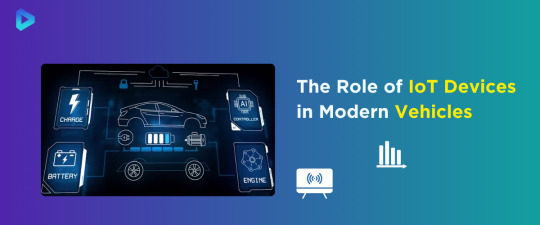
Importance of IoT Devices in Modern Automobiles
IoT devices are pivotal in modern automobiles, significantly enhancing their functionality and safety features. These devices facilitate seamless communication between vehicles and infrastructure, leading to improved traffic management and reduced accident rates. Sensors gather real-time data on how vehicles perform and how drivers behave. This information is crucial for predictive maintenance and enhancing the overall driving experience. IoT devices monitor crucial parameters like tire pressure, engine health, and fuel levels. These sensors issue prompt alerts for required maintenance.
Enhancing Vehicle Functionality with IoT Integration
Integrating IoT into vehicles drastically enhances their functionality, offering a range of advanced features. Smart cars can now include autonomous driving capabilities, real-time navigation, and personalized infotainment systems. IoT integration allows vehicles to interact with smart city infrastructure. This optimizes routes based on current traffic conditions to reduce travel time. IoT-powered navigation systems offer real-time traffic updates and recommend alternative routes to bypass congestion. IoT facilitates advanced driver-assistance systems (ADAS), including features such as adaptive cruise control, lane-keeping assistance, and automated parking.
Key Features of IoT-Enabled Automotive Systems
IoT-powered automotive systems incorporate various features that significantly boost safety and convenience for both drivers and manufacturers. These features include:
Real-Time Monitoring: Continuous monitoring of vehicle performance and health, providing timely alerts for maintenance and repairs.
Remote Diagnostics: Allowing technicians to diagnose and fix issues remotely, reducing downtime and improving efficiency.
Enhanced Connectivity: Enabling vehicles to communicate with each other and infrastructure, improving traffic management, and reducing accidents.
Advanced Security: Implementing robust security measures to protect vehicle data from unauthorized access and ensure data integrity.
Personalized Experience: Customizing infotainment systems based on driver preferences, providing a more enjoyable driving experience.
Impact of IoT Cloud on Smart Transportation
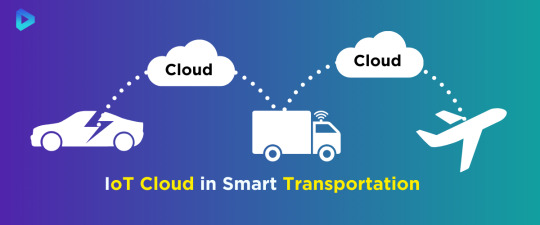
How IoT Cloud Enhances Vehicle Connectivity
The IoT Cloud significantly enhances vehicle connectivity by enabling seamless communication between vehicles and other connected devices. Vehicles can share real-time information with each other and with infrastructure systems through IoT Cloud platforms. This improves traffic flow and safety. Connected cars can communicate traffic conditions, road hazards, and optimal routes to each other. This information assists drivers in making informed choices and steering clear of traffic jams. IoT Cloud services allow for over-the-air updates. This ensures that vehicle software remains up-to-date with the latest features and security patches.
Real-Time Data Processing with IoT Cloud
Real-time data processing is a critical capability of IoT Cloud solutions. It enables vehicles to react promptly to changing conditions. The IoT Cloud processes vast amounts of data generated by sensors and devices in connected cars instantly. This immediate analysis of data allows for timely actions, such as adjusting vehicle speed to avoid collisions, optimizing fuel usage, and enhancing navigation accuracy. When a connected vehicle detects a sudden slowdown in traffic, the IoT Cloud processes this data. It then sends alerts to nearby vehicles, helping to prevent accidents. Real-time processing supports advanced driver-assistance systems (ADAS). It provides the necessary data for features like lane-keeping and adaptive cruise control.
Cost Benefits of Implementing IoT Cloud Solutions
Implementing IoT Cloud solutions offers significant cost benefits for the automotive industry. A major benefit is the decrease in infrastructure expenses. IoT Cloud services eliminate the need for extensive on-premises hardware and maintenance. Additionally, IoT Cloud solutions enable predictive maintenance, which helps identify potential vehicle issues before they become costly problems. By addressing maintenance needs proactively, companies can reduce downtime and extend the lifespan of their vehicles. IoT Cloud services allow businesses to pay only for the resources they use. This approach makes it a cost-effective solution for both small startups and large organizations.
Industrial IoT Advancements in the Automotive Sector
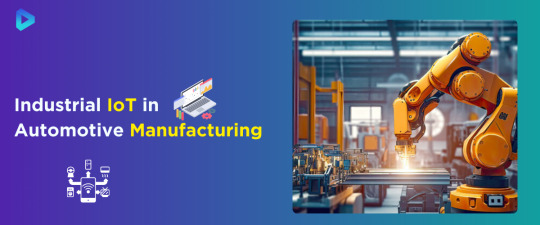
Industrial IoT Applications in Vehicle Manufacturing
Industrial IoT (IIoT) has changed vehicle manufacturing by integrating advanced sensors, data analytics, and automation technologies. These applications enable real-time monitoring and control of manufacturing processes, ensuring higher precision and quality. For example, IoT sensors can monitor equipment performance and detect anomalies, allowing for immediate adjustments to maintain optimal production conditions. Additionally, IIoT enables better inventory management through automated tracking of parts and materials, reducing waste and ensuring that production lines run smoothly. The integration of IIoT in vehicle manufacturing also facilitates seamless communication between machines and systems, improving coordination and efficiency across the production floor.
Improving Production Efficiency with Industrial IoT
Implementing Industrial IoT solutions significantly improves production efficiency in the automotive sector. By providing real-time data on production processes, IIoT helps identify bottlenecks and areas for improvement. For instance, IoT-enabled machinery can automatically adjust settings to optimize performance and minimize energy consumption. This leads to reduced downtime and increased throughput. IIoT monitors the usage of raw materials and energy, ensuring efficient resource management. The insights gained from IIoT data analytics enable manufacturers to streamline operations, reduce costs, and enhance overall productivity.
Predictive Maintenance in the Automotive Industry
Predictive maintenance is a key benefit of Industrial IoT in the automotive industry. IoT sensors monitor the condition of machinery and equipment, allowing manufacturers to predict maintenance needs, which helps prevent unexpected breakdowns and costly repairs. Vibration sensors on motors can detect early signs of wear and tear. They prompt timely maintenance before a failure occurs. This proactive approach extends the lifespan of equipment and reduces downtime, leading to significant cost savings. Additionally, predictive maintenance helps ensure consistent product quality by maintaining optimal operating conditions for machinery.
Advantages of Using Azure IoT Hub for Vehicles
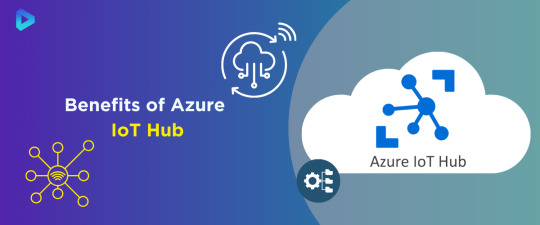
Integrating Azure IoT Hub with Automotive Systems
Integrating Azure IoT Hub with automotive systems offers numerous benefits, enabling seamless communication and data exchange between connected vehicles and cloud services. This integration facilitates real-time monitoring and control of vehicle functions, enhancing both performance and safety. Manufacturers can use Azure IoT Hub to gather and analyze data from sensors embedded in vehicles. The system provides insights into engine health, fuel efficiency, and driver behavior. The integration supports over-the-air (OTA) updates. Vehicle software remains current with the latest features and security patches.
Features of Azure IoT Hub for Smart Cars
Azure IoT Hub offers a range of features that are particularly beneficial for smart cars. These features include:
Device Management: Enables remote monitoring and control of vehicle systems, allowing manufacturers to diagnose issues and deploy updates without physical access.
Data Ingestion and Analysis: Collects and processes large volumes of data from connected vehicles, providing actionable insights for improving vehicle performance and safety.
Security: Implements robust security protocols to protect vehicle data from unauthorized access and cyber threats.
Compatibility: Supports integration with various IoT devices and platforms, ensuring seamless communication across different systems.
Scalability: Azure IoT Hub can handle a vast number of connected devices. The capability is suitable for large-scale deployments in the automotive industry.
Scalability Benefits of Azure IoT Hub
Azure IoT Hub's ability to grow is a significant advantage. It is crucial for automotive manufacturers and service providers. Azure IoT Hub can efficiently manage and process data from millions of connected vehicles. This ensures consistent performance regardless of the scale of deployment. This ability to grow allows automotive companies to expand their IoT solutions as their fleet grows. It ensures there is no compromise on performance or reliability. Additionally, Azure IoT Hub's scalable architecture supports diverse use cases, from small pilot projects to large-scale commercial deployments.
Using Thingspeak for Automotive Data Analysis

Thingspeak Applications in Vehicle Diagnostics
Thingspeak is a powerful tool for vehicle diagnostics, offering real-time data analysis and insights. By leveraging Thingspeak, automotive companies can monitor engine performance, fuel efficiency, and other critical parameters. This data helps in identifying potential issues before they become serious problems, enabling proactive maintenance. For instance, Thingspeak can track temperature variations in engine components, alerting technicians to possible overheating issues. This application of Thingspeak in vehicle diagnostics not only improves vehicle reliability but also enhances the safety and satisfaction of the driver.
Real-Time Monitoring with Thingspeak for Cars
Real-time monitoring is one of the standout features of Thingspeak for cars. Thingspeak collects and processes data from various sensors in real-time. This provides instant insights into vehicle performance and health. This capability allows for immediate response to any problems or malfunctions, reducing the risk of breakdowns. If a vehicle's tire pressure drops below a safe level, Thingspeak can instantly alert the driver. It can also suggest nearby service stations.
Data Visualization Capabilities of Thingspeak
The data visualization capabilities of Thingspeak are essential for making sense of complex automotive data. With its powerful visualization tools, Thingspeak can transform raw data into easily understandable graphs and charts. This helps automotive engineers and technicians quickly identify trends and patterns, helping better decision-making. For instance, Thingspeak can display a heat map of engine performance, highlighting areas that require attention. Teams can share these displays across departments, improving collaboration and efficiency in addressing vehicle issues.
Verizon Thingspace and Its Automotive Applications
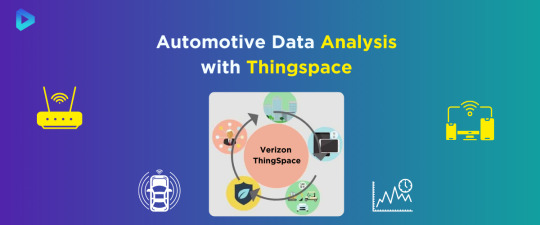
Connecting Vehicles with Verizon Thingspace
Verizon Thingspace provides robust solutions for connecting vehicles, helping seamless communication between cars, infrastructure, and cloud services. By leveraging Verizon's reliable network, automotive companies can ensure that their vehicles remain connected, regardless of location. Connectivity allows for real-time data exchange. It enables features such as remote diagnostics, over-the-air updates, and enhanced navigation services. A connected car can receive software updates and new features without needing a visit to the dealership. The vehicle always has the latest capabilities.
Features of Verizon Thingspace for Automotive Industry
Verizon Thingspace offers a variety of features tailored specifically for the automotive industry. Key features include:
Device Management: Simplifies the process of managing multiple connected devices, ensuring they are functioning correctly and securely.
Data Analytics: Provides powerful tools for analyzing vehicle data, helping manufacturers improve performance and efficiency.
Security: Advanced encryption and verification protocols protect data transmitted between vehicles and the cloud.
Scalability: Supports the growth of connected vehicle fleets, making it easy to add new devices and scale operations.
Enhancing Vehicle Connectivity with Verizon Thingspace
Verizon Thingspace significantly enhances vehicle connectivity by providing a robust and scalable platform for IoT applications. The platform enables vehicles to communicate seamlessly with each other and with external systems. It helps with traffic management, emergency response, and fleet management. Enhanced connectivity also allows for better integration with smart city infrastructure, improving overall transportation efficiency. Connected cars can share real-time traffic data with city planners. This sharing helps to reduce congestion and improve road safety.
Let's Discuss Your Idea
#IoT#IoT Devices#IoT Cloud#Industrial IoT#Azure IoT Hub#Thingspeak#Verizon Thingspace#Iot Internet#Internet Of All Things#ai#blockchain#iotsolutions#iot applications#iot development services#iot tech
1 note
·
View note
Text
Difference Between Azure and AWS IoT
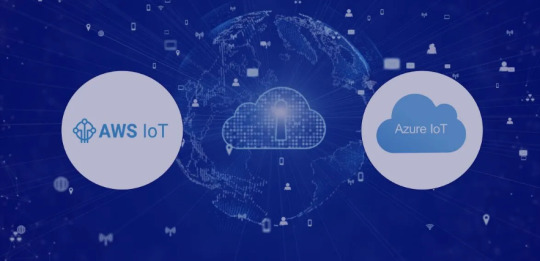
If you want to know about the difference between AWS IoT vs Azure IoT and which one is right for your business then you should read this blog.
1 note
·
View note
Text
Azure Predictive Capabilities
Ensure resilient supply chains with Azure Predictive Capabilities
0 notes
Text
6 Strategies to Boost Restaurant Profit in the Current Scenario
Restaurant Management ERP / By Trident Information Systems
Being hit by COVID 19, we all have been on different levels. Our financial, mental, and physical health have been tested. Everything shut down for months during the lockdown including restaurants. However, as everything unlocks, everything is getting back on track slowly but steadily. Restaurants have become more cautious of their health and put safety as their priority by wearing masks, maintaining social distance, and so on. With the help of Hospitality Software like LS Retail ERP, many restaurants can successfully cope with the agonizing unpredictability in society.
These practices have affected industries like hospitality which is centered around human-to-human contact. Through this blog’s medium let us discuss various methods to boost your restaurant business in the current scenarios.
#1 Upgrade Your Business to Cloud Hospitality Software and Pay Per Use
Upgrading your business to the cloud and paying just for the services you use can save you a ton of money. Just get a reliable Hospitality Software like LS Retail Hospitality Software itself and get the services you need. It is hosted on and by Microsoft Azure which ensures bank-level security. Get custom-made services as per your business requirements and pay only for what services your restaurant requires such as Mobile POS, Real-time data reports, and Customer Behavior analysis via Power BI. If you wish to centrally manage your restaurant business, you can do that too. Backed up by a reliable Implementation Partner, you can easily train your staff to use these services and let them handle any technical issues you might end up crossing paths with.
You no longer have to take up services your business doesn’t need just because they are ‘included’ in the package. For instance, if you wish to adopt the LS Retail POS but want to manage accounts in Silos, you are free to make customizations like that.
#2 Hold Events and Workshops
Events and workshops are one of the most underrated ways to boost your restaurant business. You can either tie up with different workshops or organize your own. It entirely depends upon your strategy and budget. You can boost your reach in both cases. Some examples are the bacon festival in California and the pizza fest in Italy. You can also organize something like this. Such events offer a golden opportunity to flaunt your delicacies and draw more customers. Make sure you have the relevant Hospitality Software to successfully handle the situation.
#3 Enlist yourself with different Food Delivery Platforms
Online food ordering is a boom these days, you might find yourself falling aback if you do not use online platforms to boost your customer reach. Being integrated into multiple channels can make communication with the customer more complex. It is advisable to implement Online Food Ordering Software for simplifying convenience, developing connections, and handling customer grievances.
#4 Promote your Business Using Virtual Media
Customers are attracted to what they see. Use this psychological fact to draw more of them. All you have to do is click some nice pictures of your food, enhance them a bit more and post them online. Apart from this, there are plenty of food bloggers who are monitoring socially active restaurants. They might either click pictures or use your clicked pickers for their food blogging. This will do a free promotion for you. Another technique is to create videos, having pandemics in effect, people have become even more health-conscious. You can post a video on your social media platform showing step-by-step how your cooking is complying with all the safety measures.
#5 Strategize your Loyalty Programs
Loyalty programs draw customers as honey draws bees to itself. Hit a home run with smarter loyalty programs. You can analyze your customer behavior and spending pattern, especially with cloud Hospitality Software. Ask them to enroll in your loyalty programs such as providing a 10% discount to customers who take up to 3 years of their membership. Or you can offer free beverages to customers who take up to 1 year of membership. Provide them coupons, rewards, and discounts when they revisit your restaurant.
Apart from this, you can also offer gift vouchers to your customers during the festive season. In this case, restaurants that run a buffet system get the maximum profit. They can offer a second meal free, a free buffet dinner for a couple, and so on. These strategies not only boost sales but also retain customers.
We recommend avoiding physical loyalty cards and going cashless with electronic loyalty membership cards. And managing your loyalty programs cannot even get on your nerves if you have been involved in this service in your Pay Per Use Model. Use CRM Software for Hospitality Industry to get your work done most efficiently.
#6 Adopt Cloud Kitchen
Cloud kitchens or ghost kitchens are in trend. This pandemic has boosted the trend to another level. Since it is a licensed cooking structure without a dine-in option available to prepare delivery-based food.
It is the best cost-saving strategy as you do not have maintenance and operational costs. Additionally, you can create a cloud kitchen by collaborating with other restaurants. It is recommended to get a unified Cloud Kitchen Management Solution designed for the cloud kitchen to make your management even easier. LS Retail has been voted as the best Hospitality Software for Cloud kitchens so far.
Final Words
We have mentioned the top 8 strategies to boost your restaurant business in this challenging era, you can seek technical assistance and upgrade your business to the cloud. The best part is you do not even have to buy a full-fledged package since Pay Per Use is available these days. Microsoft provides just the Hospitality Software. Trident Information Systems has been one of the Gold Partners of Microsoft and LS Retail Diamond Partners and has served various brands since then. For further queries or a demo contact us.
https://www.tridentinfo.com/6-strategies-to-boost-restaurant-profit-in-the-current-scenario-2/
#microsoft azure cloud#microsoft azure services#microsoft azure cloud computing#microsoft azure devops#microsoft azure administrator#microsoft azure iot#microsoft azure ai#microsoft azure#azure data backup#azure disaster reocvery#ms azure hosting provider#cloud services#cloud services provider#cloud services in azure#cloud services provider in india#cloud services consulting
0 notes
Photo

Working together is success • Portrait • Corporate • Couple • Famille • Lifestyle • Street Photography Pliner & Partners, Solid Partners, Flexible Solutions 15 ans d’expérience à votre service. © Photographe Igor Pliner - Instagram : https://www.instagram.com/igorpliner/ - Website: https://www.pliner.be - Meta : https://www.facebook.com/PlinerHunter/ - LinkedIn : http://linkedin.com/in/igorpliner #ai #cx #iot #art #b2b #b2c #data #retail #fcmg #sales #vente #cloud #azure #achat #brand #retailer #service #bigdata #antiquite #branding #analytics #expertise #microsoft #antiquaire #marketing #consulting #estimation #advertising #innovations #socialmedia (à PlinerHunter) https://www.instagram.com/p/CjFEjxPKYDN/?igshid=NGJjMDIxMWI=
#ai#cx#iot#art#b2b#b2c#data#retail#fcmg#sales#vente#cloud#azure#achat#brand#retailer#service#bigdata#antiquite#branding#analytics#expertise#microsoft#antiquaire#marketing#consulting#estimation#advertising#innovations#socialmedia
0 notes
Text
Bandai Chose Amazon Web Services for Tamagotchi Uni for Two Reasons

By now we all know that Bandai partnered with Amazon Web Services (AWS) when creating the Tamagotchi Uni. This fuels many features from over the air software updates, and more. In a recent interview with Yuri Okamoto (left) and Daisuke Sakamoto (right), they explain why Tamagotchi Uni uses AWS, and not other platforms such as Azure or Oracle.
According to Mr. Sakamoto, there are two main reasons for adopting AWS as a cloud platform that realizes a series of functions. The first is that AWS provided FreeRTOS, which was decided to be adopted as the OS of the Tamagotchi Uni. FreeRTOS is a real-time operating system kernel for embedded devices. This provides ease of cooperation with the cloud, especially AWS.
The goal for Tamagotchi Uni was to be able to get Tamagotchi users excited all over the world, which was critical during the planning stage.

Second, AWS provided the security Bandai was looking for. This included device authentication. "When it comes to releasing it all over the world and distributing content on the same model, technically, in addition to device authentication, security that children are not exposed to malicious intent is important. Based on that, we compared and examined the IoT services of each company, and as a result, we contacted the AWS inquiry window," said Sakamoto.

"Tamagotchi has released a different series in Japan and overseas, and recently the ones for Europe and the United States have become popular. I think that the global visibility has also increased, and I wanted to provide content where Tamagotchi users from all over the world can get excited together here." (Mr. Okamoto).

Using AWS Bandai is also able to collect data on how children play with Tamagotchi. They do not collect personal information but they are able to measure which items are polar, and Bandai will make sure of that information in the future for content production.

"As a feature of products equipped with Wi-Fi and connected to the cloud, we can now see information such as how much it is played. I want to connect such information to the improvement of future play." (Mr. Sakamoto)
Check out the full article here.
#tamapalace#tamagotchi#tmgc#tamagotchiuni#tamagotchi uni#uni#tamatag#virtualpet#bandai#aws#amazon#monoist#yuriokamoto#yuri okamoto#daisukesakamoto#daisuke sakamoto
20 notes
·
View notes
Text
Azure IoT Central: Revolutionizing IoT Solutions for Manufacturing Industries
Azure IoT Central is a cutting-edge platform built on the foundation of Azure IoT, offering a model-based approach to empower businesses in constructing enterprise-grade IoT solutions. Designed with the aim of eliminating the need for cloud-solution development expertise, Azure IoT Central provides a comprehensive software as a service (SaaS) solution. With its built-in templates for various industries, device provisioning services, and feature-rich dashboards, it enables seamless monitoring of device health, connectivity, management, and communication.

Streamlining Manufacturing Operations with Azure IoT Central
In the realm of manufacturing, Azure IoT Central proves to be a game-changer by facilitating the seamless connection, management, and monitoring of industrial assets. By leveraging Azure IoT Central, manufacturing industries can effortlessly integrate data into their applications, enabling them to make data-driven decisions and unlock operational efficiencies. With its user-friendly interface and powerful capabilities, Azure IoT Central empowers manufacturers to gain valuable insights from their assets and drive productivity.
Key Features and Benefits
Template-based Solution: Azure IoT Central offers pre-built templates tailored for various industries, enabling businesses to quickly deploy IoT solutions without extensive customization. These templates encompass a wide range of applications, including asset tracking, predictive maintenance, and remote monitoring, among others.
Device Provisioning Services: Simplifying the process of onboarding devices, Azure IoT Central provides robust device provisioning services. This feature streamlines the connection and configuration of devices, ensuring seamless integration into the IoT ecosystem.
Comprehensive Dashboard: Azure IoT Central's intuitive dashboard empowers businesses to monitor and manage their IoT devices effectively. From tracking device health and connectivity to managing firmware updates and troubleshooting, the dashboard provides real-time insights and facilitates proactive maintenance.
Secure and Scalable: Built on the trusted Azure IoT platform, Azure IoT Central ensures top-notch security for sensitive data and device communications. Moreover, it offers scalability to accommodate growing business needs, allowing seamless expansion without compromising performance.
Integration Capabilities: Azure IoT Central seamlessly integrates with other Azure services, such as Azure Machine Learning and Azure Stream Analytics, enabling advanced analytics, machine learning capabilities, and seamless data integration across the Azure ecosystem.
Unlocking the Potential of IoT in Manufacturing
By harnessing the power of Azure IoT Central, manufacturing industries can revolutionize their operations and tap into the full potential of IoT. Here's how Azure IoT Central can benefit manufacturing businesses:
Enhanced Operational Efficiency: Real-time monitoring and analysis of industrial assets enable proactive maintenance, minimizing downtime and optimizing operations. Predictive maintenance and condition monitoring enable businesses to identify and address potential issues before they escalate.
Improved Product Quality: IoT-enabled sensors and devices collect data throughout the production process, ensuring quality control and adherence to standards. Businesses can gain valuable insights into product performance, identify defects, and take corrective measures promptly.
Cost Optimization: By leveraging Azure IoT Central, manufacturers can optimize resource allocation, reduce energy consumption, and streamline maintenance processes. Data-driven insights enable businesses to make informed decisions, resulting in cost savings and improved profitability.
Enhanced Safety and Compliance: IoT devices and sensors can monitor environmental conditions, ensuring a safe working environment for employees. Moreover, businesses can leverage IoT data to comply with industry regulations and maintain quality standards.
Get Started with Azure IoT Central Today
Take the first step toward transforming your manufacturing operations with Azure IoT Central. Leverage its advanced features, comprehensive templates, and user-friendly interface to build robust IoT solutions that propel your business forward. Embrace the power of data, streamline your operations, and unlock unparalleled insights with Azure IoT Central.
#Azure IoT Central#IoT solutions#Azure IoT solutions#Azure IoT cloud services#Azure IoT application development#Azure IoT cloud integration#Azure IoT analytics
2 notes
·
View notes
Text
Azure IoT Services: Revolutionizing the World of Internet of Things
The Internet of Things (IoT) has revolutionized the way we interact with the physical world, creating vast opportunities for businesses across various industries. As IoT devices continue to proliferate, the need for robust connectivity, efficient data man

View On WordPress
#Azure IoT Services#Internetofthings#Azure#azure ai demo#azure ai tutorial#Azure Service#microsoft azure
0 notes
Text
5 Trends in ICT
Exploring the 5 ICT Trends Shaping the Future The Information and Communication Technology (ICT) landscape is evolving at a rapid pace, driven by advancements that are transforming how we live, work, and interact. Here are five key trends in ICT that are making a significant impact:
1. Convergence of Technologies
Technologies are merging into integrated systems, like smart devices that combine communication, media, and internet functions into one seamless tool. This trend enhances user experience and drives innovation across various sectors
Convergence technologies merge different systems, like smartphones combining communication and computing, smart homes using IoT, telemedicine linking healthcare with telecom, AR headsets overlaying digital on reality, and electric vehicles integrating AI and renewable energy.
2. Social Media
Social media platforms are central to modern communication and marketing, offering real-time interaction and advanced engagement tools. New features and analytics are making these platforms more powerful for personal and business use.
Social media examples linked to ICT trends include Facebook with cloud computing, TikTok using AI for personalized content, Instagram focusing on mobile technology, LinkedIn applying big data analytics, and YouTube leading in video streaming.
3. Mobile Technologies
Mobile technology is advancing with faster 5G networks and more sophisticated devices, transforming how we use smartphones and tablets. These improvements enable new applications and services, enhancing connectivity and user experiences.
Mobile technologies tied to ICT trends include 5G for high-speed connectivity, mobile payment apps in fintech, wearables linked to IoT, AR apps like Pokémon GO, and mobile cloud storage services like Google Drive.
4. Assistive Media
Assistive media technologies improve accessibility for people with disabilities, including tools like screen readers and voice recognition software. These innovations ensure that digital environments are navigable for everyone, promoting inclusivity.
Assistive media examples linked to ICT trends include screen readers for accessibility, AI-driven voice assistants, speech-to-text software using NLP, eye-tracking devices for HCI, and closed captioning on video platforms for digital media accessibility.
5. Cloud Computing
Cloud computing allows for scalable and flexible data storage and application hosting on remote servers. This trend supports software-as-a-service (SaaS) models and drives advancements in data analytics, cybersecurity, and collaborative tools.
Cloud computing examples related to ICT trends include AWS for IaaS, Google Drive for cloud storage, Microsoft Azure for PaaS, Salesforce for SaaS, and Dropbox for file synchronization.
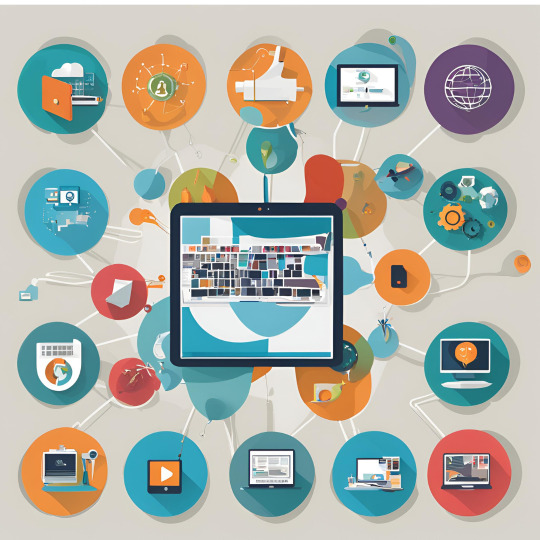
Submitted by: Van Dexter G. Tirado
3 notes
·
View notes
Text
“Innovators and Leaders: Unveiling the Top IT Companies in the US”

Title: “Innovators and Leaders: Unveiling the Top IT Companies in the US”
In the fast-paced world of technology, a select group of companies stands at the forefront, steering the direction of innovation and reshaping the digital landscape. The United States, a hotbed of technological advancement, hosts an elite cadre of IT companies whose impact transcends boundaries. Let’s delve into the realms of these trailblazers, the vanguards of the industry, who continue to redefine possibilities and set new benchmarks in the realm of technology.
1. Apple Inc.: Pioneering the Perfect Union of Innovation and Elegance At the epicenter of consumer electronics and software, Apple Inc. reigns supreme. Recognized for its sleek hardware – iPhones, Macs, iPads – and a sophisticated software ecosystem encompassing iOS and macOS, Apple’s commitment to seamless integration and groundbreaking design remains unparalleled.
2. Microsoft Corporation: Empowering Every Individual and Organization on the Planet Microsoft, a tech behemoth, extends a diverse portfolio ranging from software products and cloud services to cutting-edge hardware. Windows OS, Office Suite, Azure Cloud – each element a testament to its commitment to innovation, enterprise solutions, and empowering global connectivity.
3. Vee Technologies: Vee Technologies is one of the Top IT companies in USA which stands as a leading provider of comprehensive IT services, offering a wide array of solutions designed to meet the diverse needs of businesses across various industries. Vee Technologies as one Top IT companies in USA specializes in crafting tailored software solutions that cater to specific business requirements. Their expertise in software development spans applications, platforms, and systems, ensuring alignment with clients’ unique operational needs.
4. Amazon: Beyond Borders, Beyond Commerce Amidst its colossal e-commerce empire, Amazon’s crown jewel, Amazon Web Services (AWS), stands as a commanding force in cloud computing. It spearheads the provision of scalable computing power, storage solutions, and an array of cloud-based services.
5. Alphabet Inc. (Google): Redefining Information Access and Technological Innovation Google, the epitome of innovation, ventures beyond its hallmark search engine. Google Cloud, Android OS, and an extensive suite of software applications illustrate its commitment to shaping information accessibility and fostering technological advancement.
6. Meta Platforms (formerly Facebook): Building Connections in a Digital Sphere Meta Platforms, once Facebook, focuses on social networking and leaps into the realms of virtual reality (Oculus), augmented reality, and the pioneering developments within the metaverse.
7. IBM: Where Innovation Meets Enterprise Solutions IBM’s arsenal encompasses a gamut of IT services, consulting, and enterprise solutions, including cognitive computing technologies like Watson, geared towards reshaping industries and bolstering technological capabilities.
8. Oracle Corporation: Fortifying Businesses with Comprehensive Solutions A stalwart in database software and enterprise solutions, Oracle offers a suite of cloud applications and business software, catering to diverse business needs.
9. Intel Corporation: Empowering Computing with Semiconductors Intel’s prowess in semiconductor manufacturing crafts the beating heart of countless computing devices through its microprocessors and hardware components.
10. Cisco Systems: Forging Networks and Security in the Digital Age Cisco, a pioneer in networking solutions, fortifies businesses with networking hardware, software, cybersecurity measures, and innovations in IoT technologies.
2 notes
·
View notes
Text
Azure’s Evolution: What Every IT Pro Should Know About Microsoft’s Cloud
IT professionals need to keep ahead of the curve in the ever changing world of technology today. The cloud has become an integral part of modern IT infrastructure, and one of the leading players in this domain is Microsoft Azure. Azure’s evolution over the years has been nothing short of remarkable, making it essential for IT pros to understand its journey and keep pace with its innovations. In this blog, we’ll take you on a journey through Azure’s transformation, exploring its history, service portfolio, global reach, security measures, and much more. By the end of this article, you’ll have a comprehensive understanding of what every IT pro should know about Microsoft’s cloud platform.
Historical Overview
Azure’s Humble Beginnings
Microsoft Azure was officially launched in February 2010 as “Windows Azure.” It began as a platform-as-a-service (PaaS) offering primarily focused on providing Windows-based cloud services.
The Azure Branding Shift
In 2014, Microsoft rebranded Windows Azure to Microsoft Azure to reflect its broader support for various operating systems, programming languages, and frameworks. This rebranding marked a significant shift in Azure’s identity and capabilities.
Key Milestones
Over the years, Azure has achieved numerous milestones, including the introduction of Azure Virtual Machines, Azure App Service, and the Azure Marketplace. These milestones have expanded its capabilities and made it a go-to choice for businesses of all sizes.
Expanding Service Portfolio
Azure’s service portfolio has grown exponentially since its inception. Today, it offers a vast array of services catering to diverse needs:
Compute Services: Azure provides a range of options, from virtual machines (VMs) to serverless computing with Azure Functions.
Data Services: Azure offers data storage solutions like Azure SQL Database, Cosmos DB, and Azure Data Lake Storage.
AI and Machine Learning: With Azure Machine Learning and Cognitive Services, IT pros can harness the power of AI for their applications.
IoT Solutions: Azure IoT Hub and IoT Central simplify the development and management of IoT solutions.
Azure Regions and Global Reach
Azure boasts an extensive network of data centers spread across the globe. This global presence offers several advantages:
Scalability: IT pros can easily scale their applications by deploying resources in multiple regions.
Redundancy: Azure’s global datacenter presence ensures high availability and data redundancy.
Data Sovereignty: Choosing the right Azure region is crucial for data compliance and sovereignty.
Integration and Hybrid Solutions
Azure’s integration capabilities are a boon for businesses with hybrid cloud needs. Azure Arc, for instance, allows you to manage on-premises, multi-cloud, and edge environments through a unified interface. Azure’s compatibility with other cloud providers simplifies multi-cloud management.
Security and Compliance
Azure has made significant strides in security and compliance. It offers features like Azure Security Center, Azure Active Directory, and extensive compliance certifications. IT pros can leverage these tools to meet stringent security and regulatory requirements.
Azure Marketplace and Third-Party Offerings
Azure Marketplace is a treasure trove of third-party solutions that complement Azure services. IT pros can explore a wide range of offerings, from monitoring tools to cybersecurity solutions, to enhance their Azure deployments.
Azure DevOps and Automation
Automation is key to efficiently managing Azure resources. Azure DevOps services and tools facilitate continuous integration and continuous delivery (CI/CD), ensuring faster and more reliable application deployments.
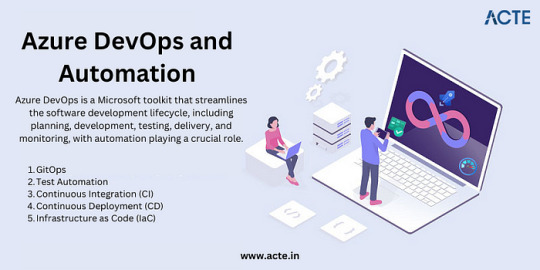
Monitoring and Management
Azure offers robust monitoring and management tools to help IT pros optimize resource usage, troubleshoot issues, and gain insights into their Azure deployments. Best practices for resource management can help reduce costs and improve performance.
Future Trends and Innovations
As the technology landscape continues to evolve, Azure remains at the forefront of innovation. Keep an eye on trends like edge computing and quantum computing, as Azure is likely to play a significant role in these domains.
Training and Certification
To excel in your IT career, consider pursuing Azure certifications. ACTE Institute offers a range of certifications, such as the Microsoft Azure course to validate your expertise in Azure technologies.

In conclusion, Azure’s evolution is a testament to Microsoft’s commitment to cloud innovation. As an IT professional, understanding Azure’s history, service offerings, global reach, security measures, and future trends is paramount. Azure’s versatility and comprehensive toolset make it a top choice for organizations worldwide. By staying informed and adapting to Azure’s evolving landscape, IT pros can remain at the forefront of cloud technology, delivering value to their organizations and clients in an ever-changing digital world. Embrace Azure’s evolution, and empower yourself for a successful future in the cloud.
#microsoft azure#tech#education#cloud services#azure devops#information technology#automation#innovation
2 notes
·
View notes